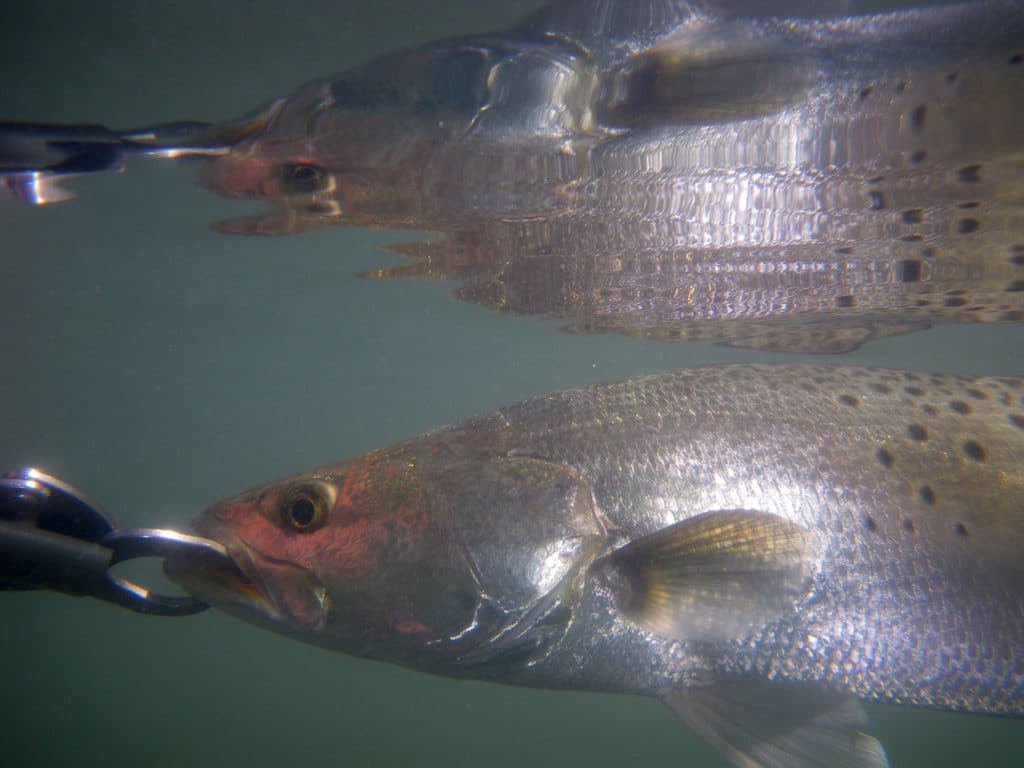
The northern half of Florida actually can freeze during winter, but fishing can heat up for anglers who watch the thermometer. After a frigid spell, Capt. William Toney of Homosassa finds excellent catches of spotted seatrout and great opportunities for sight-fishing redfish.
Flat Out
The second or third day after a front, when the temperature climbs back toward 70 degrees, the shallow flats warm. Toney, who has guided for 21 years in this area of western Florida’s Big Bend, says he looks for two things: “I look for a flat near a deep creek or a hole that has 6 to 10 feet of water. At night, those trout will lay in the bottom of it, and during the warm part of the day they’ll come out and they’ll get on those flats.”
Instead of targeting grassy areas, he looks for broken bottom with sponges and brain coral. The hard bottom warms more quickly, he says, “and there are more shrimp and crabs and baitfish in that coral. That lush, green turtle grass that you see in the summer, right now it’s kind of brown and silted over, so it’s not very productive.”
Top trout spots include the Homosassa River, Mason Creek and St. Martin’s River, as well as Fish Creek, Eleven Prong, Spring Warrior Creek and the Pepperfish Keys to the north. During winter, Toney prefers to use D.O.A.’s 5 1/2-inch Glow, Copper Crush or Gold Rush jerkbaits with a 3/0 Owner bait-style hook pinned through the bait’s nose. The large lure can be seen easily and “it looks like something good enough to chase down and eat,” Toney says.
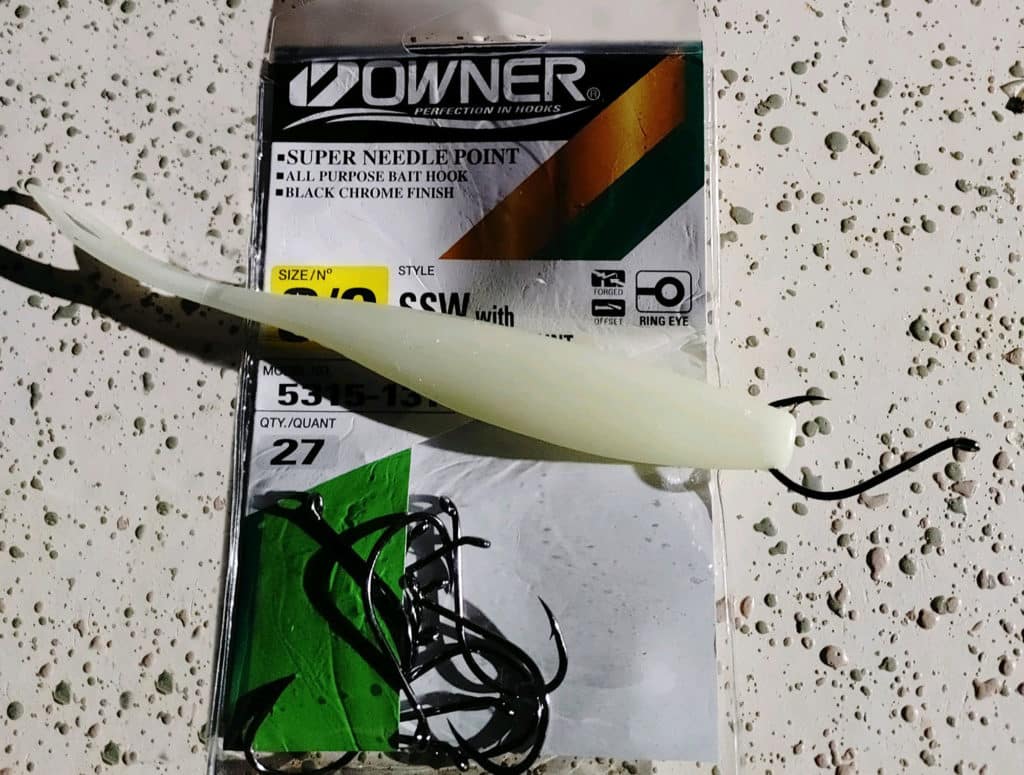
The jerkbait can be fished extremely shallow. With the lure nose-hooked instead of Texas-rigged like a plastic worm for bass, he can set the hook as soon as he feels the strike or a tick in the line. The combination of hooking the bait in the nose and tying a loop knot to the hook eye also provides two pivot points, which Toney says gives the bait really good action.
Anchor in deeper water to cast toward the shallows. Let the lure sink about 6 inches, and then fish it with a twitch-twitch-pause retrieve, he says. Hooked trout head for deeper water, so quickly take up slack before the fish can jump and throw the hook.
The best time of day to fish the outside flats falls between 11 a.m. and 3 p.m., when the water is at its warmest. “Two feet is like the golden depth, because that’s just deep enough that the sun will keep it warm,” Toney says. “When you start getting deeper, it’s not going to warm up much.”
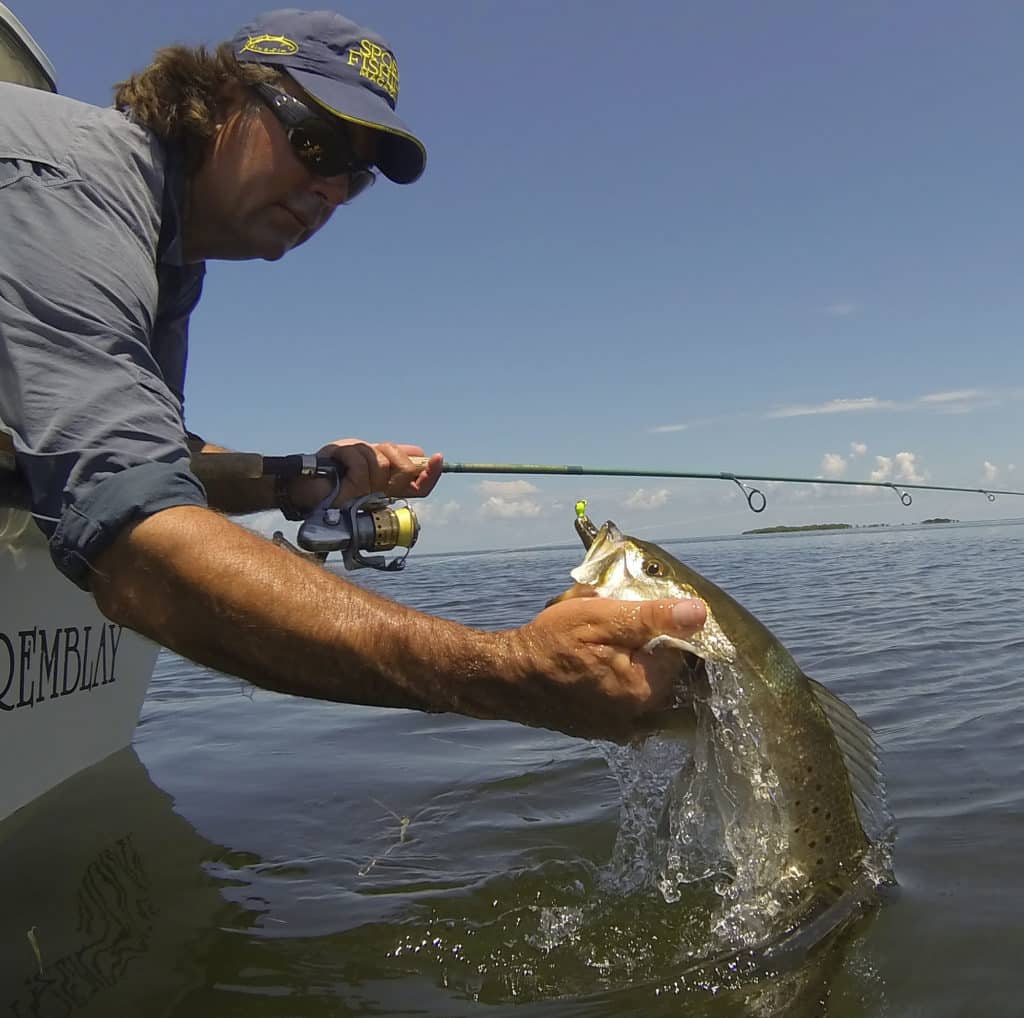
Warm Rivers
When he doesn’t fish the flats, he focuses on the outgoing tide at the region’s spring-fed Homosassa, Chassahowitzka, Crystal and Withlacoochee rivers, where the water temperature remains 72 degrees yearround. That tide stage creates warm eddies close to deep water around channel markers and rocky points, where the rivers empty into the Gulf of Mexico. He anchors uptide and just outside the channel within easy casting range of the points.
A warm sun baking the northern shoreline of those coastal rivers also enhances the bite, he adds.
He ties on a red, 1/8-ounce D.O.A. jighead with a MirrOure Lil John twitchbait in watermelon/red flake, which he says the trout attack. He fishes the jig deep and slow, hopping it vertically from the shallows down into the deeper water where the fish hold.
“One thing about the winter months: The trout are not scattered. They’re going to be in tight areas together, and they’re all there for the same reason, for the warmth,” he says, adding that the trout hang as deep as 15 feet.
Toney also likes a MirrOlure MirrOdine in silver/red or dark green/silver. Cast the suspending bait and hop it, then let it fall slowly. “We have pilchards in the rivers and I think that’s what the trout think it is,” he adds.
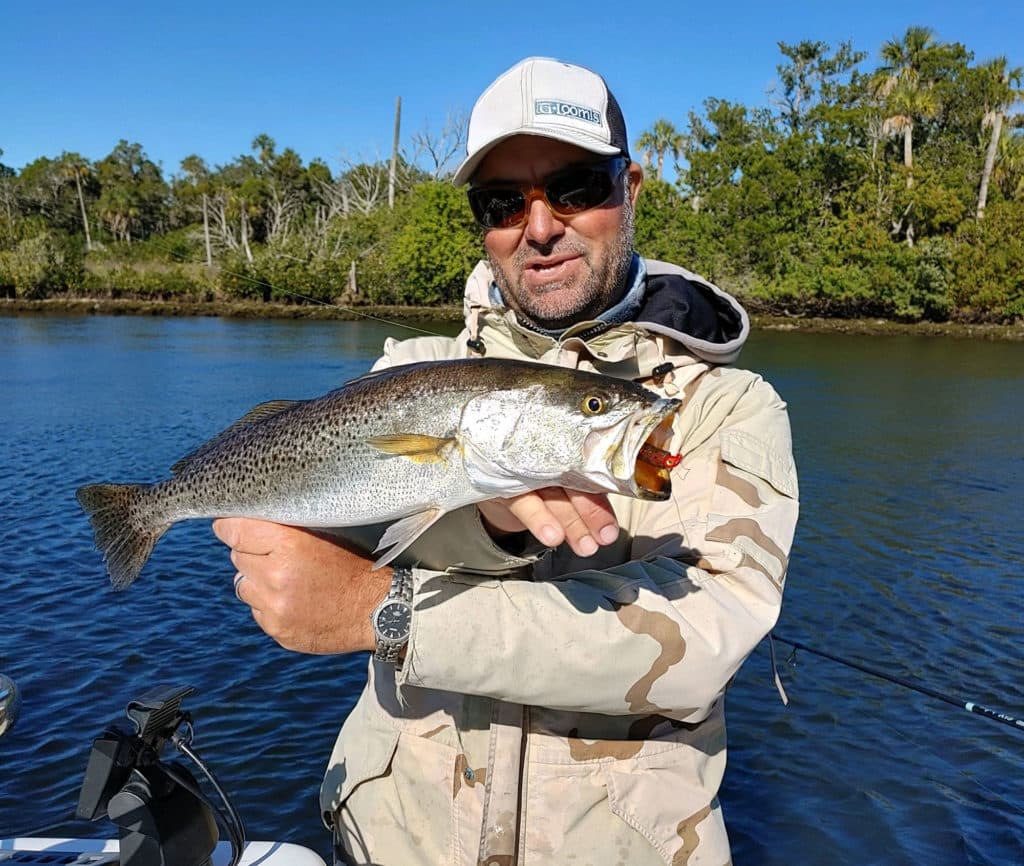
Regional trout regulations changed in 2020, he says, and that has affected the number and size of fish caught. While the daily recreational bag limit remained five per person, the slot limit tightened slightly to 15 to 19 inches; one trout over 19 inches can be kept per vessel. Also, a chartered captain and crew can no longer keep their bag limit.
“I’m already seeing the benefits” of the new regulations, he says. “In one spot, we kept four fish and threw back five because they were all too big, over the 19-inch mark. When you’re catching them 22, 23 inches, it’s kind of cool.”
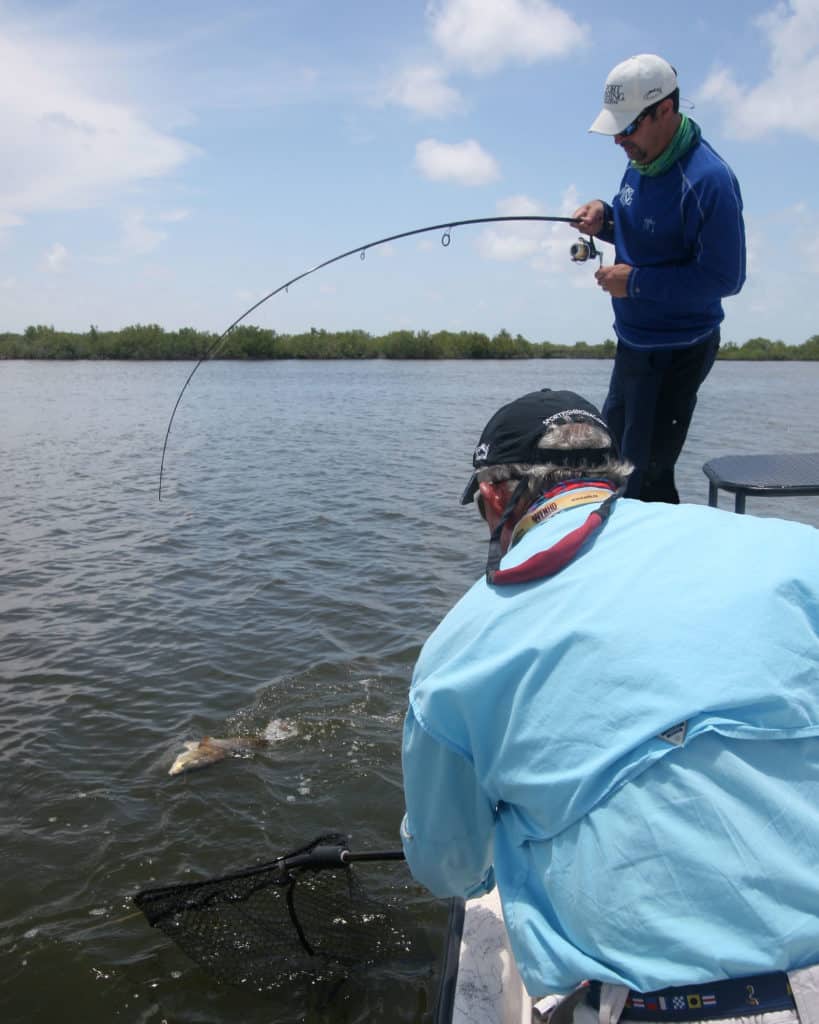
Spotting Reds
On post-cold front days, when the wind calms, Toney also targets mostly slot-size redfish in crystal-clear water. “This time of year is primo for sight-casting. You’ll get some really calm days where the water visibility is just unbelievable. It’s almost like you’re hovering in the air in your boat,” he says. “One thing that comes with that is: While you can see the fish, they also can see you.”
Stay as still as possible on the boat, and try not to rock it: The redfish can feel the pressure change from waves created by a rolling hull.
Scout points and areas over submerged rocks on an incoming tide. Fishing an incoming tide also creates a safety buffer for anglers not familiar with the region. Head too far up a creek on an outgoing tide, and you might have to spend the night in your boat.
Toney fishes the south side of keys that run east and west and are warmed by the sun. The best spots feature white mangrove trees as tall as 25 feet, which block northerly winds. Look for dark, mud bottom, where redfish soak up the warmth. The fish usually appear dark but might look silvery over a sandy bottom. Most fall within the 18- to 27-inch slot, though a few might be smaller or larger.
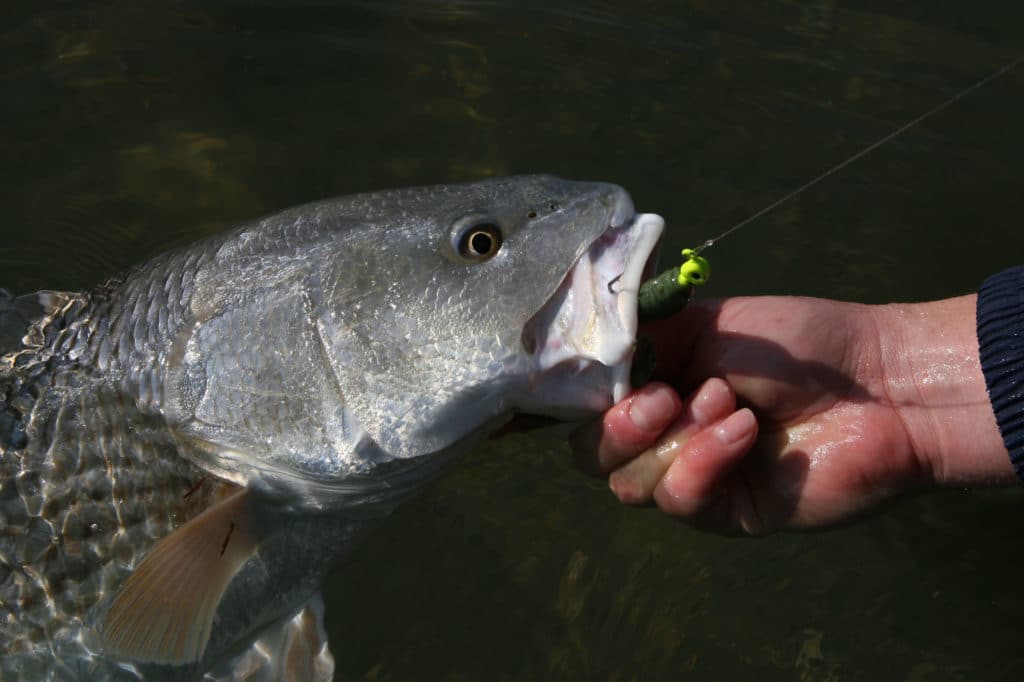
“You would think they’d be really easy to see, but sometimes they’re not,” he says. “When I approach a flat behind a key, I’ll shut down 100 yards away, and I’ll pole in there nice and easy and deliberately and watch the whole time. When I get within casting range, I’ll stop and watch. It’s better for you to see the fish move and start swimming around without spooking them than to go in there and blow them out.”
Toney often waits as much as 15 minutes to see the redfish make the first move. Once he sees the fish, he feathers a cast so his bait—a live shrimp—lands softly. He leads his target by about 10 feet and lets the current sweep the shrimp toward the fish.
In cold water, a shrimp’s scent doesn’t broadcast very quickly, so it might take a while for redfish to pick up the smell. When they do, they generally swim over and eat the shrimp, especially a few days after a front when they’re really hungry. On some cold days, though, the redfish won’t touch the bait.
“It might take you four or five attempts that day to land one or two fish, but the whole idea is watching the fish eat the bait and then getting the fish,” he says. “You kind of tricked them, and that’s the whole fun part of it. As much as I do it, I still get excited.”
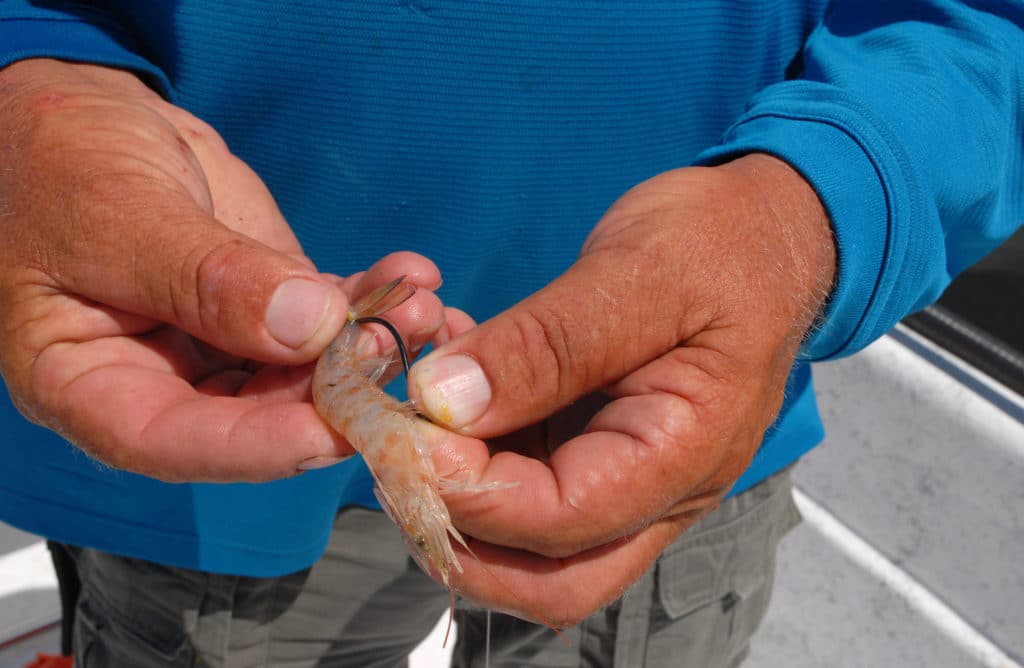
Toney rigs the live bait—a 4-inch shrimp works best—on the same hook he uses with the D.O.A. 5 ½-inch jerkbait for trout. He inserts the hook point at the base of the shrimp’s tail, threads it along the shell and pushes the point out the shrimp’s midsection. Shrimp swim backwards, so when you twitch a bait hooked this way, it looks natural. Also, the heaviest part of a shrimp is its head, so you can cast the bait farther.
Read Next: Best Bets for Winter Redfish, Trout and Striped Bass
The best tackle for targeting these trout and reds includes spinning outfits such as medium-action, extra-fast 7-foot, 6-inch G.Loomis E6X Inshore rods with Shimano Ultegra 3000 reels. Spool up with 10-pound Power Pro braid and a 20-pound Seaguar fluorocarbon leader.
That light tackle provides just the right touch for the hot winter fishing available in the Big Bend.








